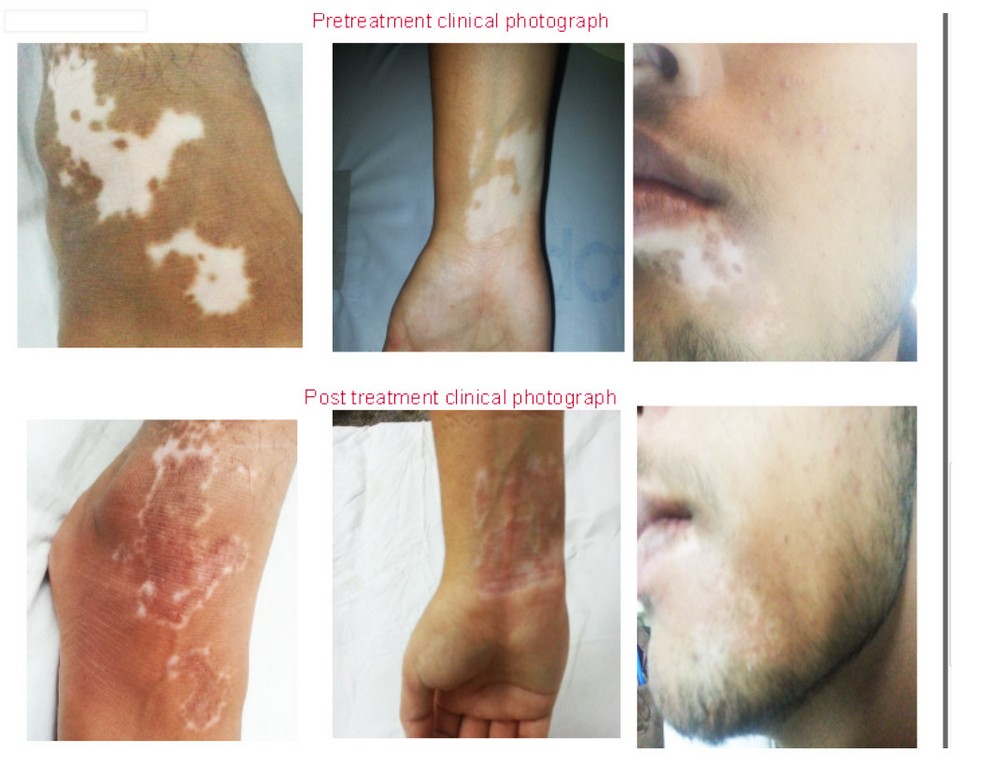Vitiligo Surgery
Vitiligo Surgery is the key interest side of Dr. Sahil Mrigpuri and he has performed more then 100 surgeries in PGI with the the world bestNon-cultured epidermal cell suspension methods. He has been awarded by world congress of dermatology for the same and British association of Dermatology Manchester for his work.

Aims of various surgical procedures:
Camouflage Tattooing: Introduction of artificial pigments into the lesions for permanent camouflage.
Excision: Removal of the depigmented areas, e.g. excision with primary closure, and covering with thin Thiersch’s graft.
Melanocyte transplantation45,46: Commonly used methods of autologous transplant of melanocytes are tissue grafts and cellular grafts.
The various tissue graft techniques used can be thin and ultra-thin split thickness grafts (STSG), suction blister epidermal grafts (SBEG), Mini punch grafts (MPG) and hair follicular grafts (HFG).
The cellular grafts include non-cultured epidermal cell suspension (NCES), cultured “pure” melanocytes (CM), cultured epithelial grafts (CEG) and autologous non-cultured extracted hair follicle outer root sheath suspension also called follicular cell suspension (FCS).
Therapeutically wounding: Injuring the lesion to stimulate the melanocytes from the periphery and the black hair follicles to proliferate, migrate and re-pigment the lesion, e.g. therapeutic dermabrasion, laser ablation, cryosurgery (liquid nitrogen spraying), needling and local application of phenol or trichloroacetic acid44.
Several points need to be assessed in patients when surgical treatment is planned42.
